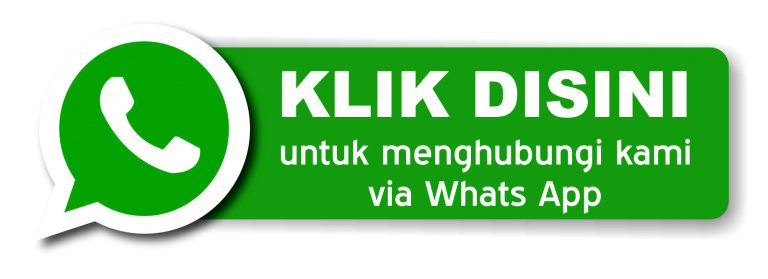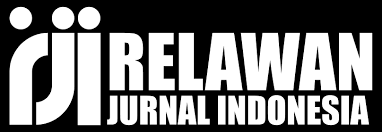SOCIAL STUDIES STUDENTS' PERSPECTIVES ON THE USE OF THE NATIONAL DIGITAL LIBRARY'S DIGITAL LEARNING RESOURCES AS A SOURCE OF INFORMATION
DOI:
https://doi.org/10.61722/jipm.v3i4.1219Keywords:
Digital Library, Social Studies Students, Accessibility, User Satisfaction, Digital Literacy, Content Relevance, Technical Barriers, Perpusnas, Educational Technology, E-LearningAbstract
This study explores the experiences of social studies students in using digital libraries, focusing on accessibility, user satisfaction, content relevance, and technical challenges. Through a mixed-method approach involving questionnaires, interviews, and observations with 50 participants, the research reveals that digital libraries significantly enhance students' academic engagement, information literacy, and research productivity. Most students reported positive experiences in terms of access and interface usability, especially in using Perpusnas (Indonesia’s National Digital Library). However, persistent challenges such as limited full-text availability, slow internet speeds, and the need for improved user guidance continue to hinder optimal usage. The study concludes that addressing technical issues and curating discipline-specific content are vital for improving the efficiency and inclusivity of digital libraries. These findings contribute to the ongoing discourse on digital transformation in education, emphasizing the need for strategic development in digital library services tailored to specific academic fields.
References
Abinowi, E., Aminudin, A., Rejeki, D. S., Agustine, M., Saputry, H., & Putri Sugarna, K. N. (2024). Digilite Content Management System Digital Library Lite. International Journal of Engineering Business and Social Science, 3(1), 20–27.
Abinowi, E., Dzulfiqor, H. A., Sri, R. D., & Andini, K. N. (2024). Development of Digital Collections In Libraries and Archives In The Development of Economic Science In Bandung. Jurnal Informatika Ekonomi Bisnis. https://doi.org/10.37034/infeb.v6i1.860
Afinni Dwi Jayanti, U. N., Rahma, A., Partika Dwi, C., & Fahendra, M. S. (2024). Persepsi mahasiswa tentang penggunaan teknologi digital dalam proses pembelajaran. Comit: Communication, Information and Technology Journal, 2(2), 144–151.
Akbarini, N. R., & Anggrawal, A. (2024). Validity and reliability of test questions to measure the information literacy skills of prospective teacher students. Jurnal EduScience (JES). https://doi.org/10.36987/jes.v11i1.5640
Al-Shurman, Y., Abdelrahman Alqiam, H. A., Banisaeed, R. A., & Rababah, M. A. (2023). Social Studies University Students’ Perspectives of e-Learning Classes: A Case Study. Journal of Higher Education, Theory, and Practice, 23(7). https://doi.org/10.33423/jhetp.v23i7.6021
Alvarez-Flores, E. P., Moreno, M. M., & Núñez-Gómez, P. (2024). Competencia y comportamiento informacionales de estudiantes para el uso de las bibliotecas digitales universitarias. https://doi.org/10.22201/iibi.24488321xe.2024.99.58881
Alcubilla, P., Arellano, A. L., & Leguízamo, L. (2023). Ethical considerations in informed consent. IntechOpen. https://doi.org/10.5772/intechopen.1001319
Amirullah, R. U. (2022). Strategi perpustakaan perguruan tinggi dalam meningkatkan literasi mahasiswa. 1(1), 1–12. https://doi.org/10.18860/uajmpi.v1i1.821
Arms, W. Y. (2000). Digital libraries. MIT Press.
Atkins, S., Mackenzie, J., & Jones, L. (2024). Ethical practice in participant-centred linguistic research. Linguistics. https://doi.org/10.1515/ling-2023-0130
Beetham, H., & Sharpe, R. (Eds.). (2013). Rethinking pedagogy for a digital age: Designing for 21st century learning (2nd ed.). Routledge.
Bonk, C. J., & Khoo, E. (2014). Adding some TEC-VARIETY: 100+ activities for motivating and retaining learners online. OpenWorldBooks.
Borgman, C. L. (2007). Scholarship in the digital age: Information, infrastructure, and the Internet. MIT Press.
Bush, V. (2023). Digital Libraries: A Frontier in Library and Information Science as speculated by Vannevar Bush in 1945. International Journal of Library and Information Science Studies, 9(2), 1–8. https://doi.org/10.37745/ijliss.15/vol9n218
Byrne, A. (2003). Digital libraries: barriers or gateways to scholarly information? The Electronic Library, 21(5), 414–421. https://doi.org/10.1108/02640470310499777
Chavan, K., & Naikar, S. (2023). Digital Library Services and Their Importance in Academic Libraries (pp. 279–295). SAGE Publishing. https://doi.org/10.4018/979-8-3693-2841-5.ch015
Cusimano, F. (2021). Biblioteca Digitale, o dell’evoluzione della biblioteca: la Veneranda Biblioteca Ambrosiana e la sua nuova Biblioteca Digitale ad accesso aperto dedicata ai manoscritti. Bibliothecae.It, 10(1), 420–462. https://doi.org/10.6092/ISSN.2283-9364/13076
da Costa, M., Sgrancio Olinda, A. L., & dos Santos, A. P. (2024). Digital technologies in education: Challenges and opportunities for teaching and learning. https://doi.org/10.56238/sevenvimulti2024-019
Dahal, B. (2024). Participants’ Right to Withdraw from Research: Researchers’ Lived Experiences on Ethics of Withdrawal. Journal of Academic Ethics. https://doi.org/10.1007/s10805-024-09513-y
Dembitska, S., & Кобилянський, О. (2024). Digital accessibility in education: challenges and prospects. Педагогіка Безпеки, 9(2), 57–63. https://doi.org/10.31649/2524-1079-2024-9-2-057-063
Digital library: meeting the needs of academic fraternity. (2022). GRF BOOKS. https://doi.org/10.52458/9789391842826.2022.eb.grf.asu.ch-14
Eshet-Alkalai, Y. (2004). Digital literacy: A conceptual framework for survival skills in the digital era. Journal of Educational Multimedia and Hypermedia, 13(1), 93–106.
Furqon, M. A. (2023). The Role Of Digital Literacy In Improving Students’ Competence In Digital Era. Al-Wijdān: Journal of Islamic Education Studies, 8(2), 253–260. https://doi.org/10.58788/alwijdn.v8i2.2328
Gilster, P. (1997). Digital literacy. Wiley.
Gonzalez, C., Marrero López, D., Calle-Arango, L., Mateus Montenegro, H., & Clasing, P. (2022). Pola Penggunaan Teknologi Pembelajaran Digital dan Pendekatan Pembelajaran oleh Mahasiswa Universitas Chili. ECNU Review of Education, 5, 37–64. https://doi.org/10.1177/20965311211073538
Gottlieb, E., Danso, S., Azanu, B., Semarco, S. K. M., & Aidoo, E. A. K. (2024). Use of Digital Platforms Among University Students: A Systematic Literature Review. Qeios. https://doi.org/10.32388/sqkgt5.2
Ilahi, R., Widiaty, I., Wahyudin, D., & Abdullah, A. G. (2019). Digital library as learning resources. 1402(7), 077044.
Kanyika, M. E., Sadykova, R., Tuyenbayeva, K., & Wema, E. (2024). User perspectives on library digitization and its impact on research capabilities. Information Development. https://doi.org/10.1177/02666669241294053
Levin, S. (2024). Identifying Student Behavior Patterns Based on LMS Data. https://doi.org/10.55041/isjem01447
Macharia, N. (2023). TAM’s perceived usefulness influence on social network site preference for accessing reproductive health information among university students. International Research Journal Of Modernization In Engineering Technology And Science. https://doi.org/10.56726/irjmets43586
Mahmudah, E., & Azrina, R. (2024). Digital Library Development as an Effort to Improve Information Services. Jurnal El-Pustaka, 5(2), 137. https://doi.org/10.24042/el-pustaka.v5i2.24072
Meena, A. K. (2024). Assessing the Accessibility of Digital Libraries for Individuals with Digital Libraries. International Journal For Multidisciplinary Research. https://doi.org/10.36948/ijfmr.2024.v06i01.12540
Mungwabi, H. N. (2023). Penilaian Penggunaan Sumber Daya Situs Web Perpustakaan oleh Mahasiswa Program Studi Informasi di Universitas Dar es Salaam. Jurnal Teknik dan Teknologi Tanzania, 42(2), 224–237.
Normuratova, V. I. (2024). Digital literacy in modern education. The American Journal of Social Science and Education Innovations, 6(10), 61–65. https://doi.org/10.37547/tajssei/volume06issue10-07
Ojoboh, T. M., & Igben, H. G. O. (2024). Impact of Research Methodology on Data Quality and Research Findings. JPPUMA, 12(1), 34–42. https://doi.org/10.31289/jppuma.v12i1.11793
Prensky, M. (2010). Teaching digital natives: Partnering for real learning. Corwin Press.
Problems and solutions of information resource management in university digital library. (2023). Information and Knowledge Management, 4(4). https://doi.org/10.23977/infkm.2023.040413
Quansah, E. M. (2024). Digitalization Strategies: Overcoming Contextual Limitations of Bop Developing Countries. https://doi.org/10.2139/ssrn.4779367
Reyes, Y., Baque Estefany, A., Bravo Ordoñez, Y., Ortega Lema, W. I., Parrales Ramírez, A. P., & Ronquillo Figueroa, C. G. (2024). Technological resources to encourage dynamic student participation in the area of social studies. 3, 31. https://doi.org/10.56294/pa202531
Ruffel, M., & Pavlovic, D. (2022). Digital university libraries – student perceptions. Media Studies and Applied Ethics, 3(2), 37–46.
Saefulrahman, I., Muhammadi, R., Sakti, M. F. D., & Alpasha, J. N. (2025). Implementasi Sistem Manajemen Kearsipan Digital di Dinas Perpustakaan Dan Kearsipan Kota Bandung Mini Riset Otonomi & Pemerintahan Lokal. Jurnal ISO: Jurnal Ilmu Sosial, Politik Dan Humaniora, 5(1), 12. https://doi.org/10.53697/iso.v5i1.2171
Salsinha, L. M. D. S., & Lukman, J. P. (2024). Library Digitalization and Modernization: Strategies for Utilizing E-Clipping to Enhance Services at The Digital Library of The Audit Board of The Republic of Indonesia (BPK RI) Bali Provincial Office. Deleted Journal, 2(2), 176–188. https://doi.org/10.30598/baileofisipvol2iss2pp176-188
Selwyn, N. (2016). Education and technology: Key issues and debates (2nd ed.). Bloomsbury Publishing.
Silaban, K., Situmorang, G. A., Batubara, L. Z. P., Sihombing, M., Situmorang, M. I., Mutiara, N., & Lumban Tungkup, J. A. (2024). Transformasi Pendidikan di Amerika: Tantangan dan Inovasi di Era Digital. 1(3), 142–146. https://doi.org/10.57251/polyscopia.v1i3.1349
Singh, B., Gangwar, S., Sharma, M., & Devi, M. N. (2022). An Overview of Hybrid, Digital and Virtual Library. World Journal of English Language, 12(3), 32. https://doi.org/10.5430/wjel.v12n3p32
Subject recruitment, consent, and assent (pp. 125–147). (2023). Elsevier eBooks. https://doi.org/10.1016/b978-0-323-90969-3.00002-5
Syafika, Y. Z., & Antonio, G. R. (2024). Impacts of the technology acceptance model (tam) on the use of the tiktok e-commerce application among indonesian students. Utsaha, 47–64. https://doi.org/10.56943/joe.v3i2.591
Unlocking the power of digital libraries: a comprehensive review. (2023). International Research Journal of Modernization in Engineering Technology and Science. https://doi.org/10.56726/irjmets46652
Van Dijk, J. (2006). Digital divide research, achievements and shortcomings. Poetics, 34(4–5), 221–235.
Warschauer, M. (2011). Learning in the Cloud: How (and Why) to Transform Schools with Digital Media. Teachers College Press.
Zhang, H., Wang, T., & Li, G. (2024). The Impact of Digital Transformation on Education. Education Insights, 1(1), 3–9. https://doi.org/10.70088/dnebt544
Downloads
Published
How to Cite
Issue
Section
License
Copyright (c) 2025 JURNAL ILMIAH PENELITIAN MAHASISWA

This work is licensed under a Creative Commons Attribution-ShareAlike 4.0 International License.












